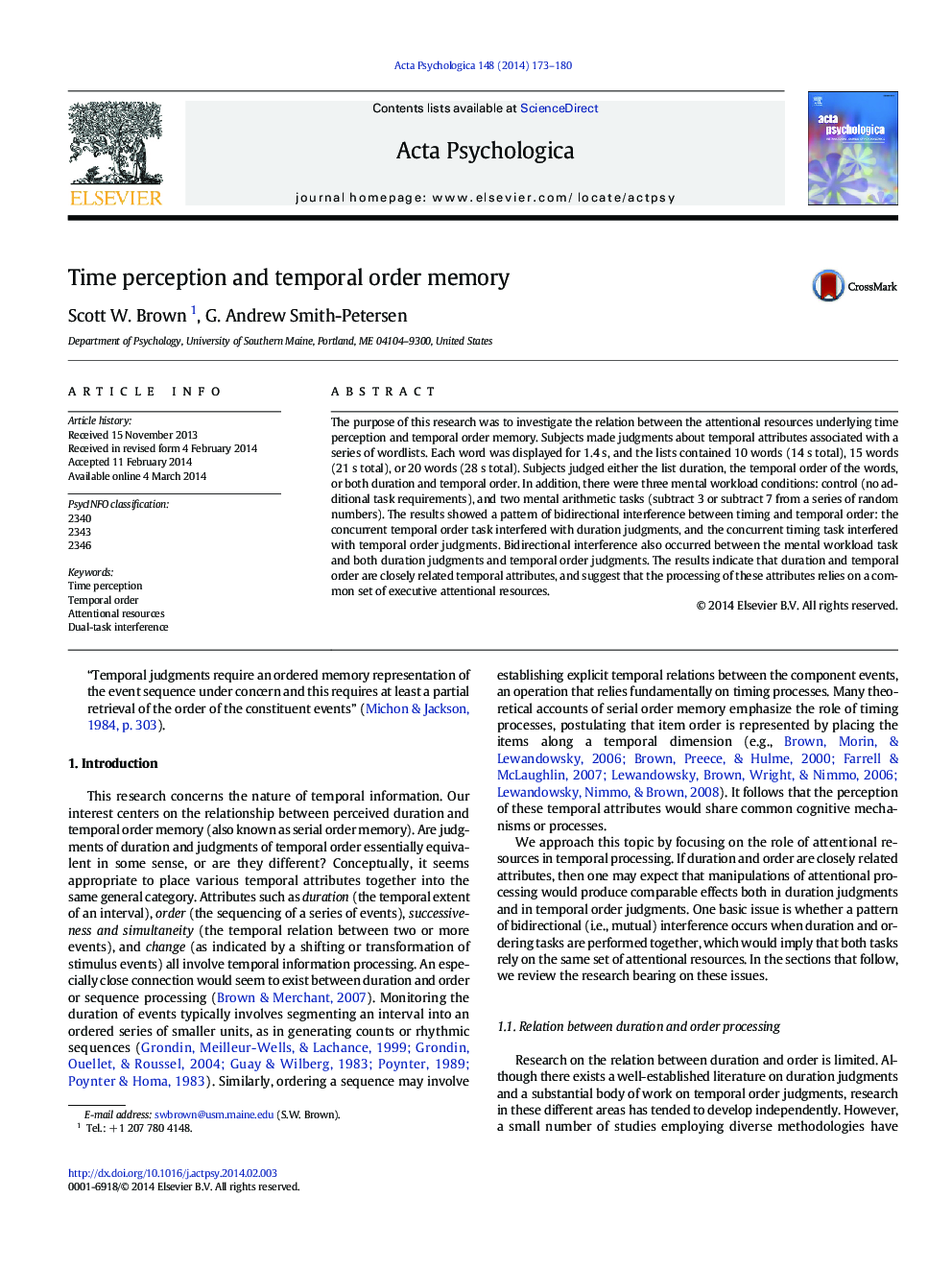| Article ID | Journal | Published Year | Pages | File Type |
|---|---|---|---|---|
| 7277829 | Acta Psychologica | 2014 | 8 Pages |
Abstract
The purpose of this research was to investigate the relation between the attentional resources underlying time perception and temporal order memory. Subjects made judgments about temporal attributes associated with a series of wordlists. Each word was displayed for 1.4Â s, and the lists contained 10 words (14Â s total), 15 words (21Â s total), or 20 words (28Â s total). Subjects judged either the list duration, the temporal order of the words, or both duration and temporal order. In addition, there were three mental workload conditions: control (no additional task requirements), and two mental arithmetic tasks (subtract 3 or subtract 7 from a series of random numbers). The results showed a pattern of bidirectional interference between timing and temporal order: the concurrent temporal order task interfered with duration judgments, and the concurrent timing task interfered with temporal order judgments. Bidirectional interference also occurred between the mental workload task and both duration judgments and temporal order judgments. The results indicate that duration and temporal order are closely related temporal attributes, and suggest that the processing of these attributes relies on a common set of executive attentional resources.
Related Topics
Life Sciences
Neuroscience
Cognitive Neuroscience
Authors
Scott W. Brown, G. Andrew Smith-Petersen,
